

Discover more from Easy By Nature
Birdwatchers and shorebirds both dream of fluddles; these ephemeral wetlands are magnets for people and birds during spring and fall migration. The shorebirds dream of them while half asleep, thousands of feet in the air flying 40-50 miles an hour. One hemisphere of their brain shuts down briefly while the other guides them in flight. This unihemispheric sleep is one of many remarkable adaptations shorebirds use during their epic migrations in spring and fall.
Most of the three dozen or so shorebird species that pass through the Midwest each year are in the middle of their journey between South America and Canada. Around the time of the vernal equinox in March, they start to get restless, which eventually prompts them to take to the air on the coast of South America and fly across the Atlantic Ocean. Some land on the southern coast of the US, but others keep going and land in the middle of North America. Shorebirds are part of a vast, flowing avian river in the sky. During peak migration, tens of millions of birds of hundreds of species pass over every square mile of land in the US. They migrate at night and drop down out of the sky at first light to find places to rest and refuel.
At this point in their journey, they are likely starving. They have used up their fat reserves and cannibalized their internal organs to produce enough energy to sustain themselves. When they land, they need to find high-quality habitat where they can forage for abundant food without being disturbed. The abundance and nutritional quality of their food are essential factors that determine if they will be able to put on enough fat to complete their migration to their nesting grounds in northern Canada and Alaska. They are in a race against time, and they are in a hurry to get to their breeding grounds in time to synchronize their nesting cycle with peak insect activity so they have enough food to feed their young.
Shorebirds will feed day and night in stopover habitat in an effort to double their body weight before completing the final leg of their migration. They calibrate the size of their gizzard to match the size and digestibility of their prey. Large, hard-to-digest food stimulates the birds to enlarge their gizzard so they have the strength to grind it into small pieces. Once they have gained enough weight, they shrink their gizzard and some internal organs, as they simultaneously increase the size of their heart and flight muscles, in preparation for their flight to the arctic.
The entire landscape used to welcome shorebirds, and it provided abundant food for hundreds of thousands of years. But, over the past 300 years, we have recklessly remade the landscape to suit our purposes, and we have left very little habitat for wildlife. The loss of habitat, climate change, and other threats have caused shorebird populations to decline by an estimated 70% since 1973. Fortunately, there are simple things we can do that benefit people and nature. Restoring wetlands or fluddles in agricultural fields is one of them.
The consistent steep declines in shorebird populations have prompted many people to work on their behalf. Diverse groups have come together to restore critical habitats that provide the habitat connectivity birds need during their complex life cycle. I have met some inspiring people as part of my work with John Wesley Powell Audubon. We partnered with the Geography Department at Illinois State University to map out all of the fluddles in McLean County. Our work was recently featured in this article on fluddles.
We initially identified 8,000 wetlands in the county. That proved to be too many to manage, so we adjusted our criteria and identified the largest wetlands that showed the most promise. That left us with 130 wetlands to monitor for bird activity. We now have GPS coordinates and locations marked on Google Maps and our local birding community is ready to monitor these locations when the rains and birds come in April.
Our goal is to identify the best locations and then share options for conservation with landowners. Pheasants Forever and the US Fish and Wildlife Service are crucial partners in this work. The Pheasants Forever Precision Ag Program helps farmers to see the places on their farms where they are losing money growing crops. Wet spots often fall into this category. The Pheasants Forever motto is to “turn those red acres green.” Green as in profitable. Landowners can stack up multiple sources of conservation funding and turn areas that are costing them money into consistent profit centers.
The beautiful thing about this process is that it quickly becomes about more than money. The landowners that take this approach typically are motivated by hunting. They restore wetlands and associated prairie buffers in order to hunt waterfowl. Hunting often remains a focus for a few years, but something amazing often happens. All that time observing the prairie, wetlands, and birds engenders a broader appreciation for nature. They notice the wind in the tall grass, the birdsong, shorebirds, and muskrats, and they talk about it. Nature has entered their consciousness in a new way and shaped their view of the world.
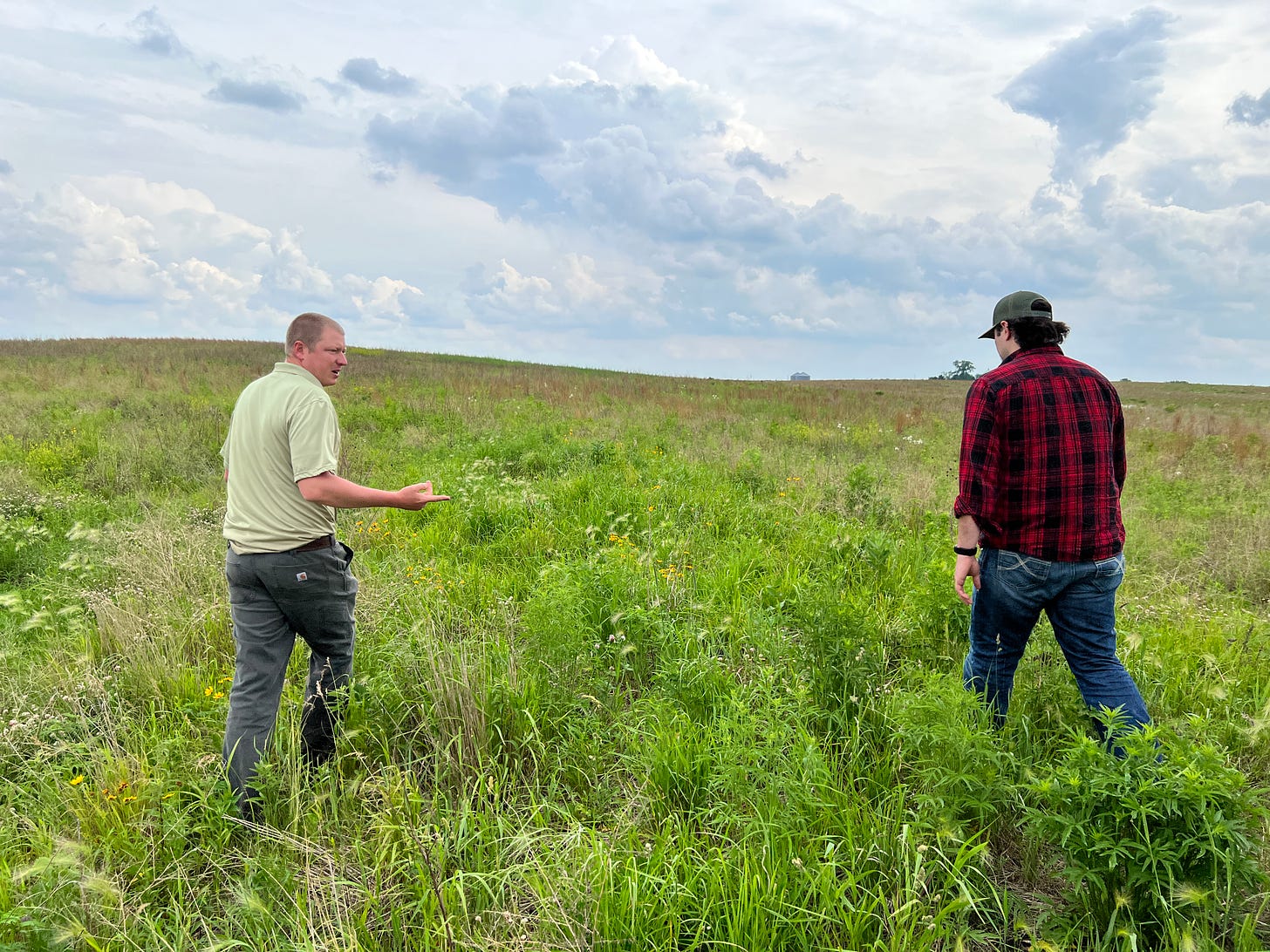
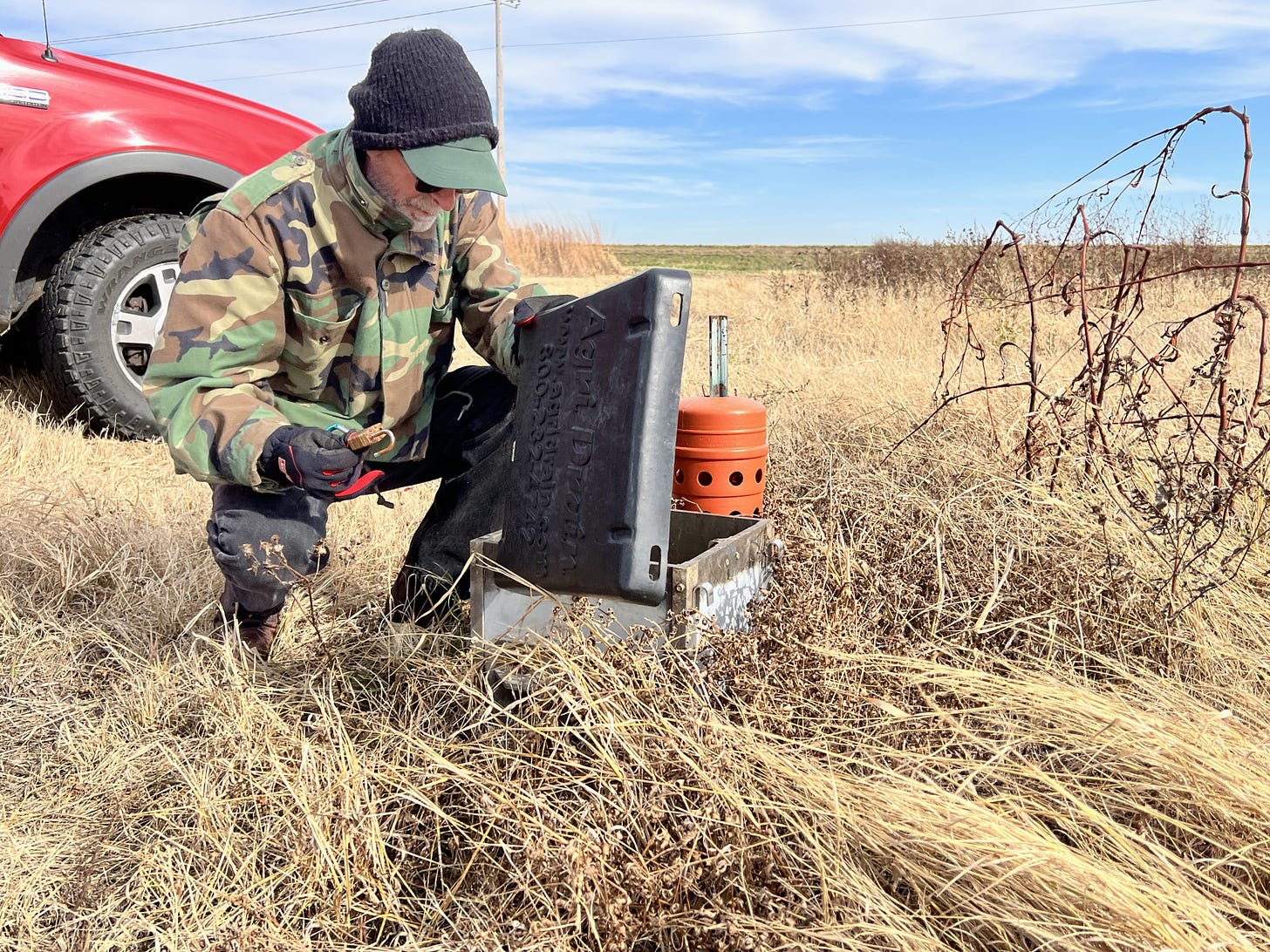
Their willingness to openly discuss this transition to a way of being that essentially makes them a birdwatcher is hopeful. We are telling this story in partnership with Turnstone Strategies through the film Fluddles, which is in development. This film will tell the story of the people and birds that benefit from wetland restoration on farms in central Illinois.
Shorebird habitat restoration is a story about connections mediated by birds that know no boundaries. Seemingly disparate groups of people are connecting with each other and discovering that they have a lot in common. The conversations that we have open up opportunities for people to express their thoughts and concerns in new ways. We are helping more people to realize that it is okay to care about and support wildlife.
This has led to a sense of optimism and a realization that combining this hope with new technology and the insights it generates can turn the tide and create an interconnected network of habitats for birds.
eBird and the big data it generates and analyzes is one of these new technologies, but a whole constellation of modern technology is coming together to revolutionize our understanding of bird migration. Nexrad radar is one crucial development that has helped researchers see where and when birds migrate. New developments with better sensors and ground-level radar have revealed previously unknown critical stopover habitats.
Motus towers are another new development. These radio towers pick up signals from tiny transmitters that researchers attach to birds. The data they produce reveals a fine-grained picture of bird movements. The next advance coming our way is acoustic monitoring. The Cornell Lab of Ornithology, New York University Audio Research Lab, and Google are all working together to bring this technology to widespread use. The goal is to develop software and microphones that can capture the nocturnal flight calls of birds and identify them to species.
Coupled with other recent advances, this new acoustic technology would create a more comprehensive and detailed picture of bird migration. All you would have to do is place a microphone outside your house that records and transmits data to your computer. In the morning you could see data representing the birds that flew over your home at night. People would be able to see that on peak nights, thousands of birds have flown right over their houses.
Some people do not need acoustic monitoring to know how many birds are migrating through their area. All they have to do is look out their window in the morning. We recently visited a landowner who was an early adopter of wetland restoration. He has spent the past 25 years restoring and managing diverse wetlands on his property. It was a beautiful experience to meet someone whose life is so deeply intertwined with birds. He marks the seasons by their arrival and departure.
We met at his house and quickly ended up standing by the spotting scope in his living room. Our attention was drawn to the hundreds of waterfowl and shorebirds that were resting and foraging in his large complex of wetlands. After hearing stories of his life and relationship with the land, I realized I was talking to a man who feels deeply connected to birds. He embodies the sentiments of St. Exupery who noted that “The most beautiful things in the world cannot be seen or touched. They are felt with the heart.”
This is why fluddles are so important, they can reawaken our hearts to the miracle of bird migration and prompt us to act on behalf of nature. We can shift our attention outside of ourselves to encompass all of life. Young women in Argentina have embraced this perspective, and they volunteer to help protect shorebirds from development and human disturbance. They cradle the Red Knot, or Playero Artico, in their hands before releasing the newly banded birds to embark on a nine-day 5,000-mile flight to the US.
Maria Belen Perez is one such volunteer who noted:
“To hold a Red Knot and feel its beating heart, is to feel the heartbeat of the earth.”
From Maria’s hands to our shores, shorebirds connect us across continents through the immensity of the sky. Our challenge is to open ourselves to such an extent, that we can become attuned to their beating hearts.
Subscribe to Easy By Nature
Exploration and insights into re-wilding your yard, neighborhood, and spirit.

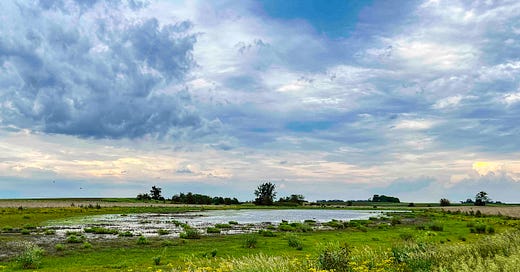



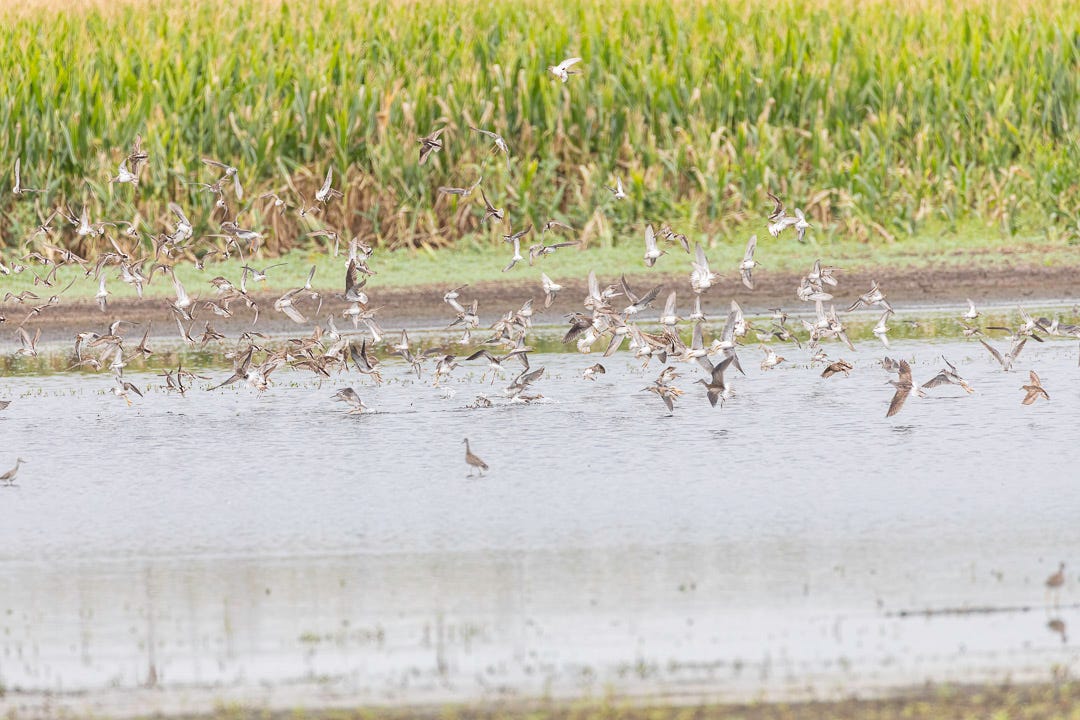
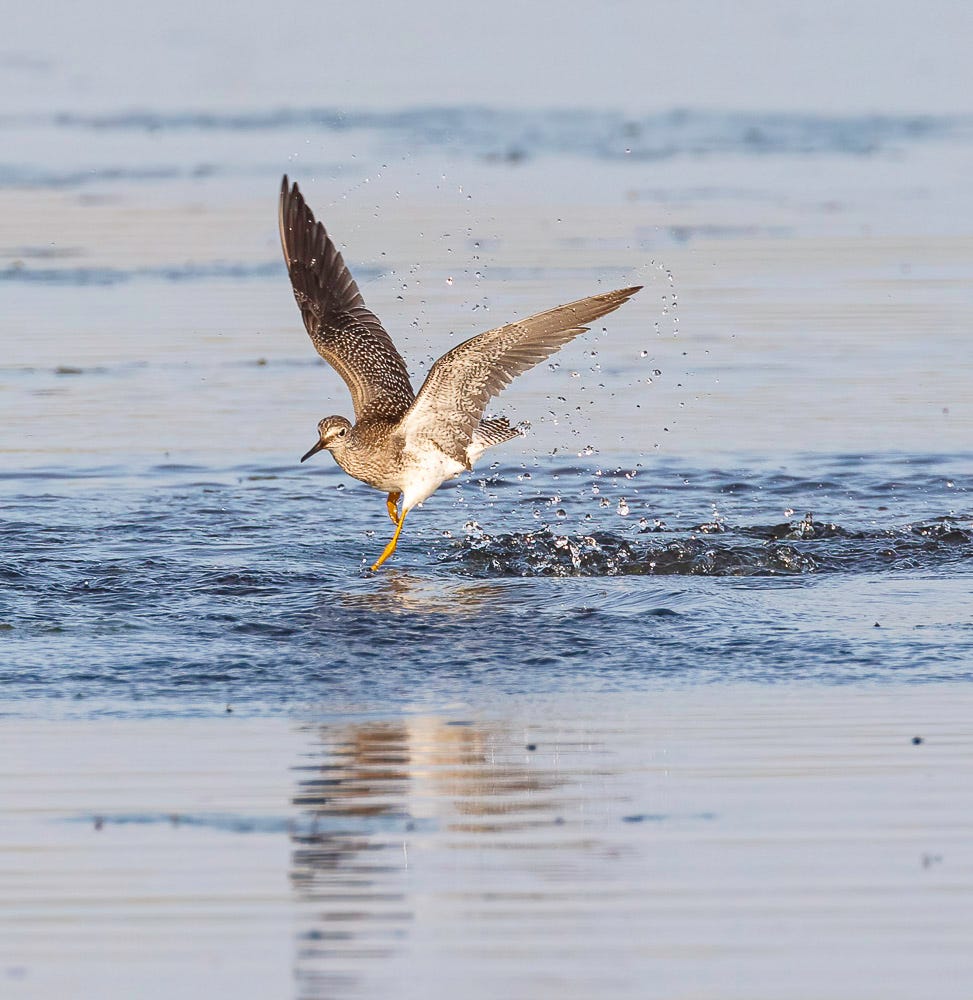

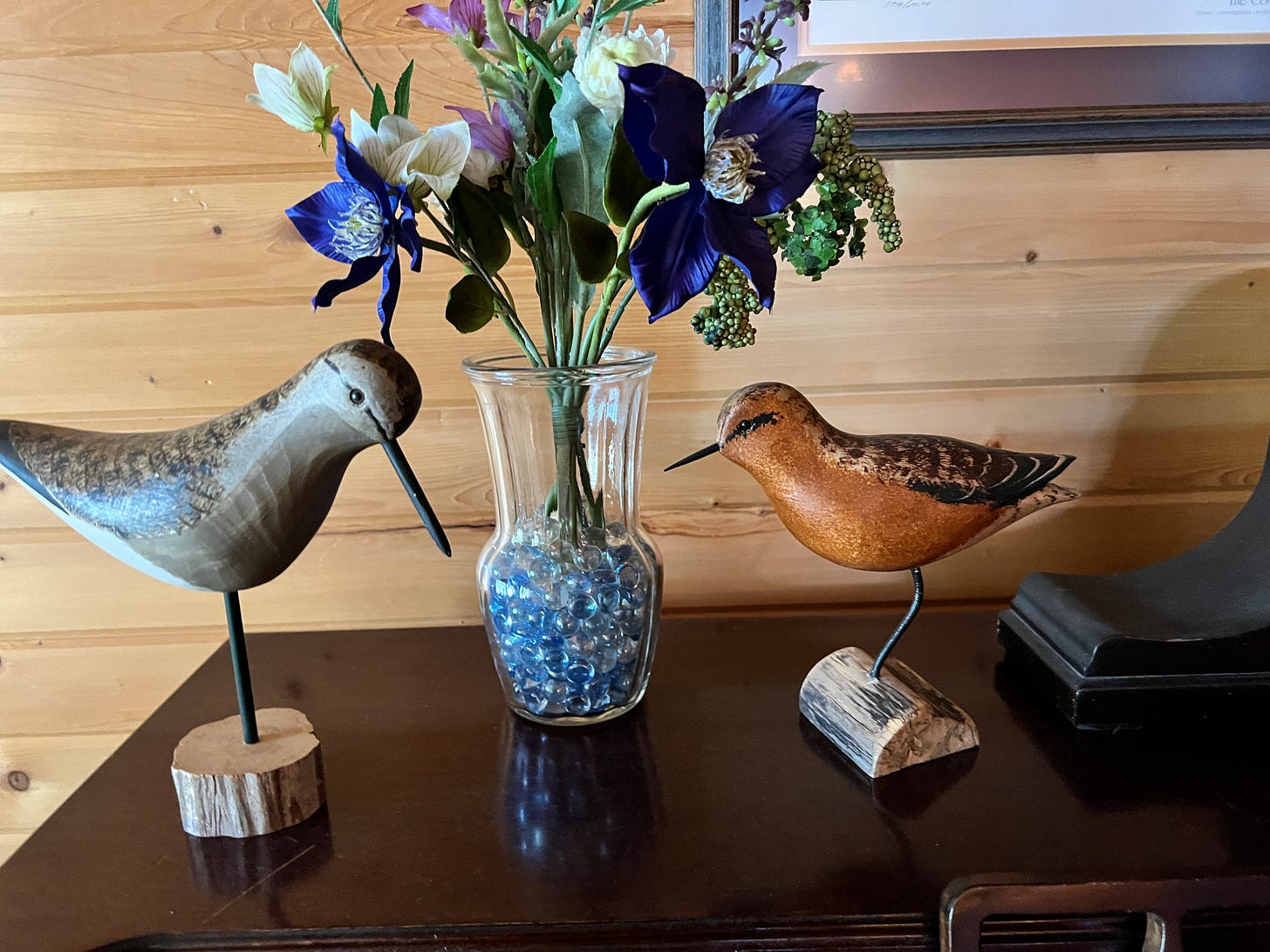



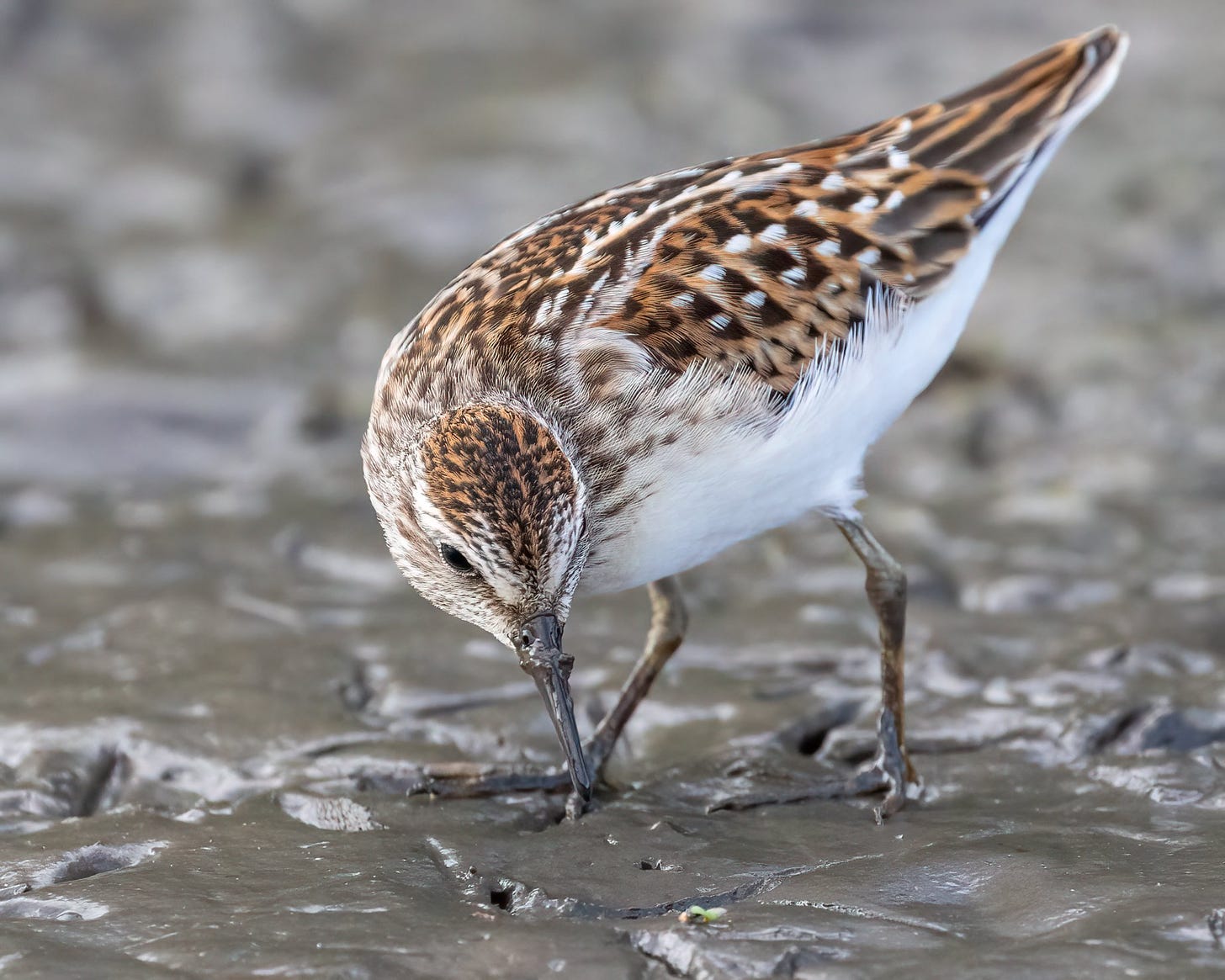
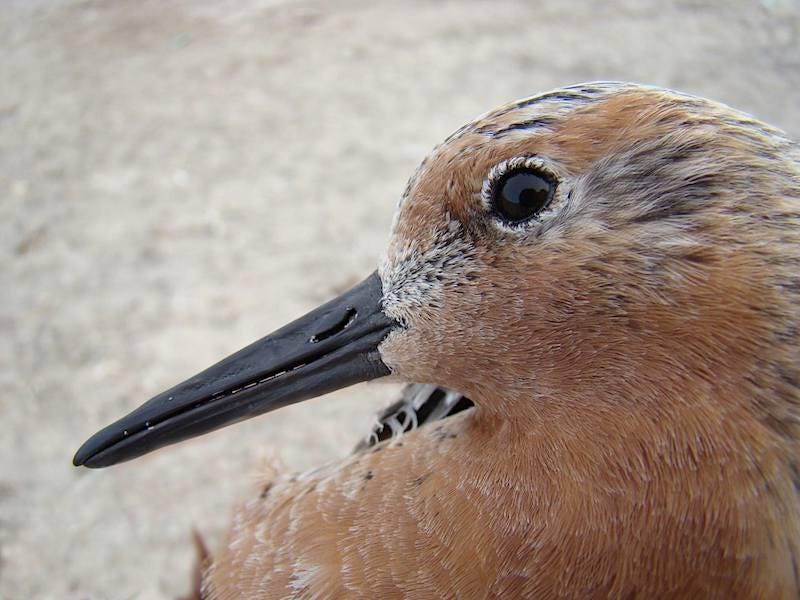





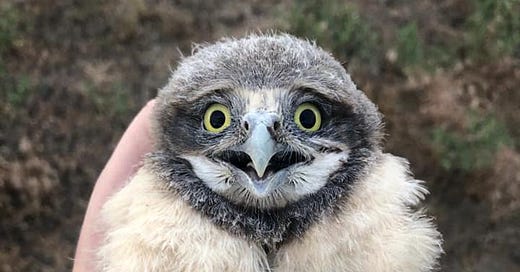


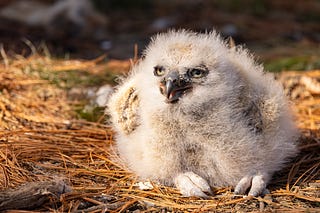


This article was so inspiring -- thank you to you and others for taking on this important project. In June 2019 I spent a few weeks in Illinois and remember how flooded the fields were. Some portions of my family's farm were never even planted that year because of all the water. I remember hoping that there were some researchers out there monitoring how birds and other wildlife were responding to all the unplanted acreage and extra fluddles. It would be interesting to know how much nature could come back after just one season without intensive agriculture (and hopefully it wasn't mostly invasive weeds that thrived). Did you come across any research or observations about wildlife impacts from the 2019 floods in your fluddle work?
Wow. What an excellent article, and so heartfelt. I really like that engaging people with the shorebirds that thrive on wetlands on their properties is instrumental in creating people engaged with the miracles of nature. Turning some farmlands into preserves is also a excellent strategy that benefits both the farmers and the birds. Well done!